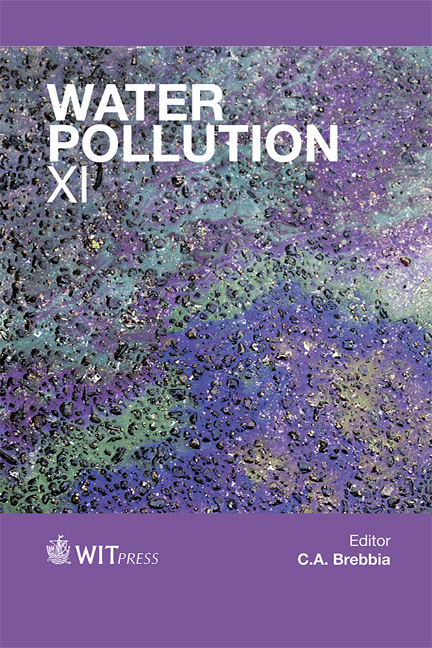Heavy Metal Contamination From Treated Sewage Effluents
Price
Free (open access)
Transaction
Volume
164
Pages
9
Page Range
381 - 389
Published
2012
Size
367 kb
Paper DOI
10.2495/WP120331
Copyright
WIT Press
Author(s)
S.K. Al-Musharafi, I. Y. Mahmoud & S. N. Al-Bahry
Abstract
Excessive exposure of heavy metals is known to have deleterious effects on health and has been shown to cause various diseases. The determination of heavy metals in sewage is important for monitoring environmental pollution caused by treated sewage effluents (TSE). Rare rainfall in Oman and lack of fresh water has led the authorities to recycle sewage effluents. However, the environmental impact related to heavy metals in sewage effluents is a serious health issue. Three sewage treatment plants (STPs) were used in this study. Water and sewage samples were analyzed for heavy metals; Al, As, B, Cd, Co, Cr, Cu, Fe, Hg, Mn, Mo, NI, Pb, V and Zn using Inductively Coupled Plasma Optical Emission Spectrometer (ICP-OES) type Perkin Elmer 3300 DV ICP. Heavy metal concentration in the three STPs varied significantly and it was in correlation with heavy metals in sludge and soil irrigated with TSE. STPs used in industrial areas had higher concentration of heavy metals compared to STPs from residential communities, hospitals, and public institutions. In general, the highest concentration among the heavy metals from sludge was Pb, Hg, Cu, Cr, Ni, Zn and Cd. The results of this investigation indicates that there is a potential threat reusing recycled water and sludge which can infiltrate livestock, wildlife which impose the risk of spreading human diseases. Keywords: heavy metals, treated sewage effluent, sludge, contamination.
Keywords
heavy metals, treated sewage effluent, sludge, contamination





